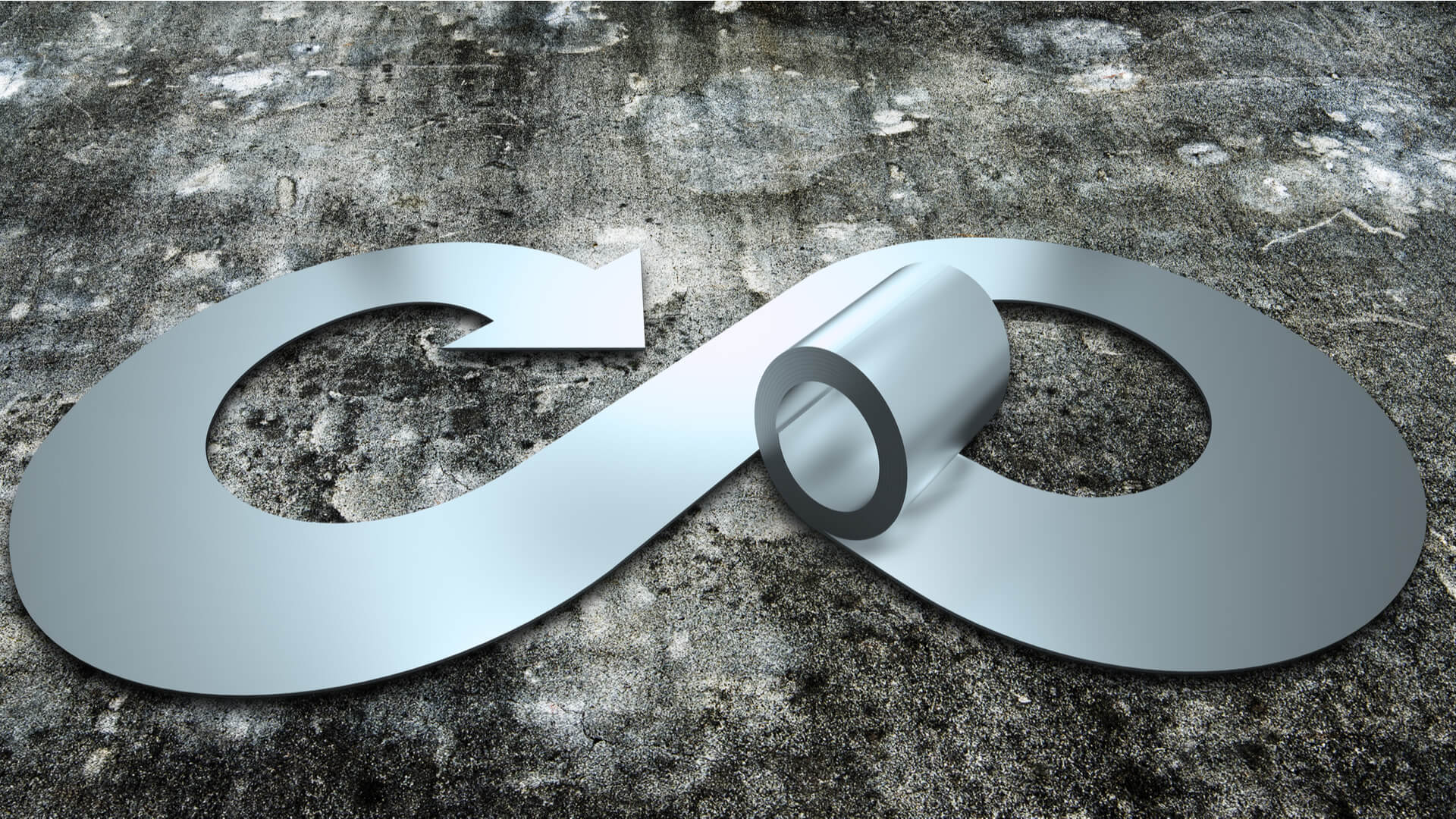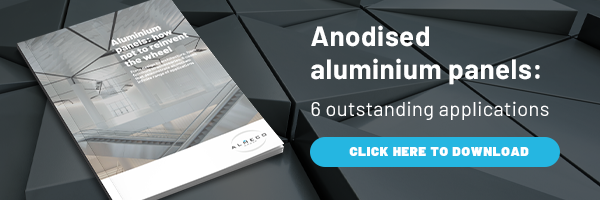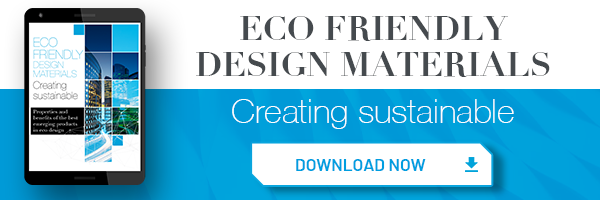Growing demand for sustainability from consumers and the push from regulators for a shift towards a circular economy require companies to look for more sustainable, durable, and easily recyclable materials.
Lightweight and strong, durable, and infinitely recyclable, energy-saving aluminium is the sustainable material of choice. The Aluminium Association estimates that nearly 75% of all aluminium ever produced is still in use today and, as many industries look at this material as a more than valid alternative for a sustainable choice, the aluminium industry is working constantly to reduce its carbon impact.
Over the next two years, aluminium will be used in an increasing number of industries and applications. Here are some trends for 2022 and 2023.
1. Aluminium in the horticultural sector
In the past 15 years, PVD treated aluminium has been increasingly used to create HPS reflectors for the horticultural sector, like in greenhouses. These reflectors, manufactured with physical vapour deposited aluminium like Vega, provide maximum efficiency by offering optimized light spectrums modulated to the sodium lamps emission, and spread also heat energy generated by the lighting source.
For greenhouse farmers, in fact, energy consumption is one of the most significant expenditures and the combination of light and heat can lead to perfect synergy to optimize the energy consumption. In addition, the heat can be directed towards the crops and not waisted in areas that don’t need it or can be stored via underground storage systems and can be used when coldness is more present. The hybrid solution (the combination of HID and LED reflectors) can provide a perfect management of light and heat since they can also be positioned very close to the plants without any risk of overheating them or can focus on the growth of specific stages thanks to all the possible recipes achievable with different applies of LEDs.
As the urban population continues to grow, vertical farming is emerging as the “agriculture of the future”. The interest in agricultural products, combined with the need for greater efficiency and lower environmental impact, will further drive the demand for aluminium reflectors produced out of PVD treated aluminium for these applications. This because LEDS are becoming more and more powerful and thus create huge challenges for uniform lighting distribution and heat dissipation. In this aluminium is by nature a perfect conductor.
Last but not least, aluminium is endlessly recyclable so although aluminium production is a costly process, at the end finally there it can be endlessly recycled and re-used. This makes aluminium a very environmentally friendly metal.
2. Use of UV in horticulture instead of germicides and pest control
In agriculture and horticulture, UV rays are increasingly being used to replace insecticides and germicides. By using aluminium to produce reflective optics, the sanitising power of these rays can be accelerated.
UV light can help maintain a healthy growing environment by reducing mould, fungus, and certain plant pests, which require alternatives to chemicals due to increasing resistance to fungicides.
Moreover, UV radiations proved to be effective in reducing mites that can cause serious damage to crops. In a study conducted precisely to analyse the effect of artificial UV radiation on these parasites, researchers found that less than 6% of the larvae exposed to UV-B doses survived to the second day and all larvae died on the third day of the experiment.
3. Use of aluminium to accelerate UV sanitising powers
High-reflective aluminium surfaces can be used to accelerate UV sanitising powers in medical, forensic, and industrial applications.
In industrial environments, for example, aluminium can be used as a covering in pipelines for ventilation, especially in those industrial settings where volumes are significant. A trend that has certainly been accelerated by the outbreak of Covid-19 pandemic, when the need to ensure the continuity of operations clashed with the challenge of guaranteeing the safety of workers.
In the medical sector, high reflective aluminium surfaces are used both as a covering for the internal walls of medical equipment and as shaped reflective optics. In addition, they can also be used to maximise UV-B radiations in some medical treatments, for example in light sources for the treatment of psoriasis and other skin conditions.
4. Combining infrared sources with aluminium for hospitality and agricultural applications
Infrared surfaces are high-reflective aluminium solutions that can help to maximize the irradiance by concentrating radiation toward a specific direction. In addition, they can spread the radiation, increasing the overall uniformity distribution.
For these reasons, they are used in lamps for outdoor heating, e.g., for applications in the patios of bars and restaurants, as they provide a greater efficiency than traditional solutions.
Infrared heaters are also used in garages and sheds, especially in northern European countries, where temperatures are colder.
5. Aluminium as an interior design material
Aluminium is also increasingly adopted in interior design, where it is often used in tables, chairs, accessories, decorative wall panels, and cabinetry. Thanks to its malleability and ductility, aluminium gives designers flexibility and freedom in choosing the shape for their creations, while remaining aesthetically pleasing.
As a lightweight material, aluminium also reduces the weight of interior design objects and gives them a leaner appearance. Because of its sustainable characteristics, it can be expected that the demand for greener solutions in furniture will also drive the use of aluminium in interior design.
6. Aluminium in fashion
As an excellent solution for creative applications, aluminium is also used in fashion and luxury industries. From clothes and luggage to necklaces, earrings, and bracelets: the properties of aluminium allow artists to create unique products that combine strength, lightness, and elegance.
In addition, as a non-toxic metal, aluminium is largely safe to use. It is also a hypoallergenic metal: it does not contain nickel or iron, which means it does not rust and is safer for the skin. In these sectors, too, the increasing focus on sustainability will drive the use of this material, which can be applied to make sustainable products without having to sacrifice elegance in design.
7. Applications in the renewable energy industry
With its lightweight strength and unmatched corrosion-resistance and durability, aluminium is widely used to build renewable energy platforms, like solar panels and wind turbines. In fact, the material accounts for 85% of most solar PV components.
In the industry of renewable energy, aluminium can be used in several applications, such as:
- Concentrated solar power systems, especially in high irradiation areas, as CPS technologies only harvest the direct component of sunlight.
- Heliostats, plane devices which include a mirror that turns to keep reflecting sunlight toward a predetermined target, compensating for the sun’s apparent motions in the sky.
- Solar thermal collectors, typically used in residential and commercial buildings for water and space heating or solar cooling.
- Vacuum tubes solar power collectors, for those areas where solar irradiation is lower, or where the application requires a high temperature difference.
- Solar district heating plants, for areas where there is demand for heating and/or cooling.
- Photovoltaic concentration systems, which allow the increase of solar electric output compared to that of non-concentrator PV systems.
European climate commitments (such as the targets set by the Green New Deal) and energy commitments will accelerate the demand for solar and wind energy parks in the coming years. Moreover, the geopolitical situation has prompted Europe to set a course for energy independence that focuses on renewable energies. As Member States work to remove bureaucratic barriers to solar and wind power systems, the use of aluminium in this sector is expected to grow.


